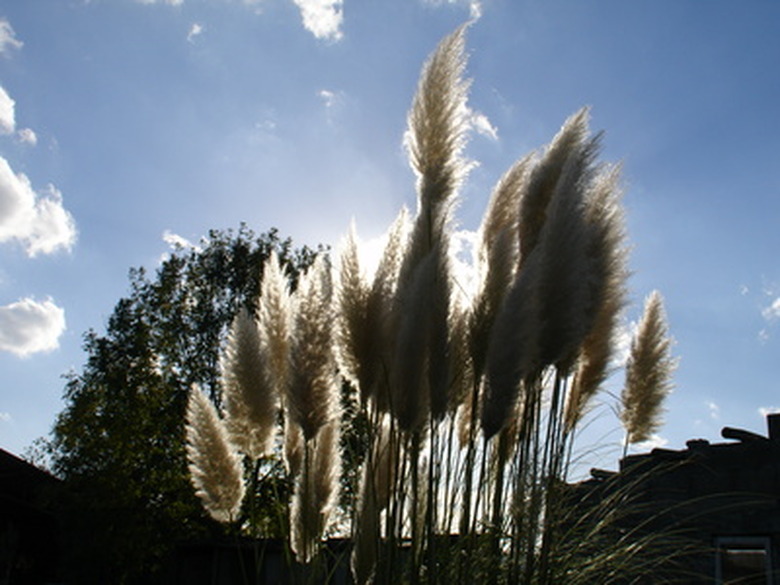Fertilizer For Pampas Grass
Pampas grass, tall and stately, is a prized specimen in many Southern gardens. Growing up to 10 feet tall with its fluffy flowers, pampas grass is easy to grow. Though not a heavy feeder, like all plants, pampas grass sometimes loses its vigor and requires fertilizer.
Plant Culture
Pampas grows in USDA zones 7 and warmer in sunny sites. Though pampas grass tolerates many soils, it does best in well-drained soils. Pampas is easily grown from sprigs or clump divisions. Tolerating drought, pampas should still be watered deeply if drought is persistent.
- Pampas grass, tall and stately, is a prized specimen in many Southern gardens.
- Growing up to 10 feet tall with its fluffy flowers, pampas grass is easy to grow.
Nutritional Requirements
The nutritional requirements of pampas grass are minimal. Fertilization of adjacent lawns often provides sufficient nutrients. If pampas vigor reduces or the green color fades, fertilizer will be necessary. Lack of abundant flowering will indicate a need for nutrition, as well.
N-P-K Ratios
Use a balanced fertilizer for pampas grass. Balanced fertilizers have approximately equal amounts of nitrogen (N), phosphorus (P) and potassium (K). N-P-K ratios should be something like 8-8-8 or 10-10-10. Slow-release fertilizers offer the benefit of releasing their nutrients slowly, necessitating fewer feedings.
- The nutritional requirements of pampas grass are minimal.
- Use a balanced fertilizer for pampas grass.
Application
Spread fertilizer around the base of the plant at the rate of 1 cup per foot of clump diameter. Scratch the fertilizer gently into the soil or spread an inch or two of mulch to prevent erosion of fertilizer granules during watering. Water gently, but thoroughly, after each application. Always follow label instructions to avoid over-fertilization and leaf or root burn.
Natural/Organic Alternatives
In early spring, side dress all around the plant with compost, which will slowly release nutrition throughout the season. You can also use shredded grass clippings as mulch to provide natural nitrogen as they break down.
